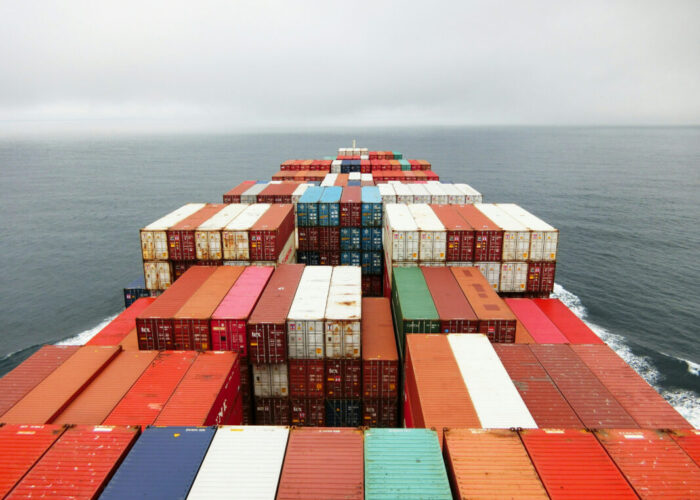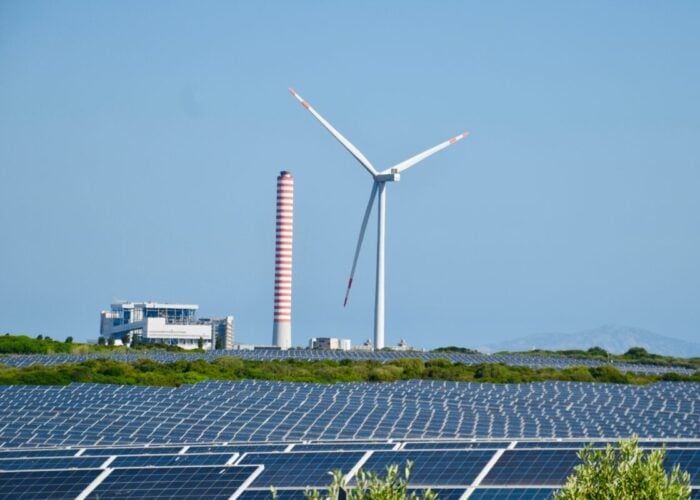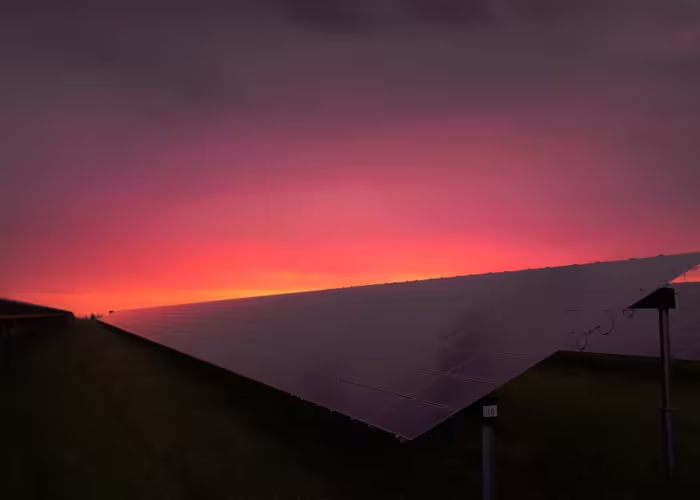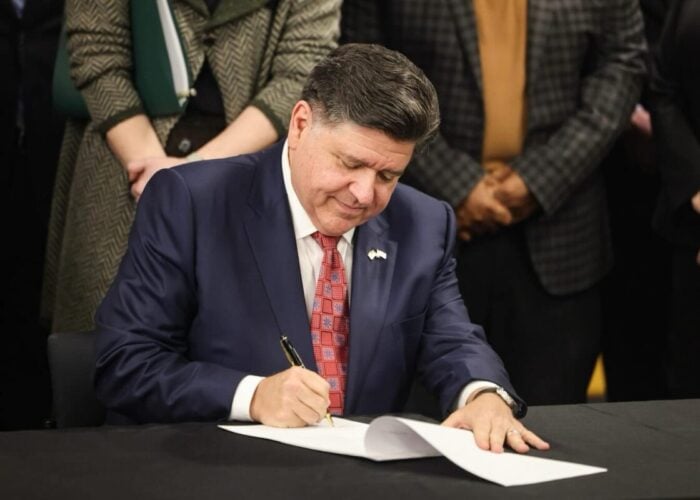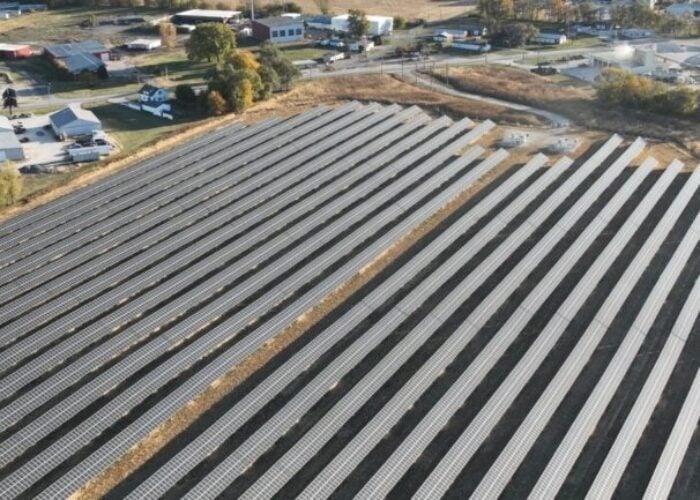eSolar, Inc. responds to my CSP (Concentrating Solar Power) site survey and answers a few questions.
The Sierra SunTowers were offline for five (5) days because of a “planned outage” followed by another day due to high winds.
Try Premium for just $1
- Full premium access for the first month at only $1
- Converts to an annual rate after 30 days unless cancelled
- Cancel anytime during the trial period
Premium Benefits
- Expert industry analysis and interviews
- Digital access to PV Tech Power journal
- Exclusive event discounts
Or get the full Premium subscription right away
Or continue reading this article for free
Not long after the cross post of eSolar Sierra SunTower Project offline to the PV-tech.org Editor’s Blog, I got a response from eSolar to my questions from the previous week.
In the comments, I said:
eSolar has decided to have a dialog. Here are some of their points of clarification:
eSolar said: During your visit last week, the operations team scheduled a “planned outage” in order to complete the installation of an onsite fire system. As construction work was done close to the power block, it was unsafe to run the turbine. Additionally, the area experienced high winds on May 25, forcing the mirror fields to go into a “lockdown wind stow” position, an automated safety feature. On May 26th, the towers were running as normal. The site has not been offline for an extended period. There are a limited number of scheduled maintenance events to insure safe operations. The plant is scheduled to operate on a daily basis with limited exceptions for high winds or unforeseen events.
I said “one of the Sierra SunTowers is missing the thermal receiver enclosure nacelle”.
eSolar said: As a point of clarification, the Sierra SunTower power plant has two types of receivers in operation: a dual cavity and an external receiver. As an aside, the external receiver design does not employ an “enclosure nacelle” as mentioned in your blog post and is therefore not missing.
From direct dialog with eSolar, I learned the planned outage to install the onsite fire system lasted five (5) days from May 20-24, 2010. I visited the site on the last day of the installation and again on the reported high winds day of May 25. The thermal receiver photos supplied by eSolar only serve to confirm the towers were offline during my visits.
Victory Energy and B&W
Assisting SolarPACES, the National Renewable Energy Laboratory’s (NREL) CSP Program maintains a project database including the Sierra SunTower Project. The NREL database confirms eSolar’s statement that the dual cavity thermal receiver was supplied by Victory Energy and the external thermal receiver was designed and manufactured by The http://www.babcock.com/”>Babcock & Wilcox Company (B&W), a wholly owned subsidiary of McDermott International (NYSE:MDR).
B&W delivered and installed the external receiver replacing the second Victory Energy dual cavity design that was in operation at the Sierra SunTower unveiling ceremony in August 2009. Two press releases, one joint, announce “B&W Enters New Solar Receiver Market, Delivery of Full-Scale Receiver to eSolar's Sierra SunTower Power Plant Marks New Era for B&W”, and “B&W's Solar Receiver Performs Well in Early Operations” though both are absent from eSolar’s Press Releases webpage. Solar Receiver for Clean and Renewable Energy is the corresponding two page product brochure from the B&W Power Generation Group.
Per the B&W Solar Receiver Installation Project Case History for a Confidential Customer in the Western U.S., B&W must have installed the external thermal receiver for eSolar not long after the unveiling ceremony attended by California Governor Arnold Schwarzenegger. The Project Case History states:
In August 2009, Babcock & Wilcox Construction Co., Inc. (BWCC) installed the 50 ton (45,000 kg) receiver atop a 150 foot (46 m) high stand-alone tower.
Receiver installation requires less than one day from the time it leaves the ground until it is secured at elevation on top of the tower.
Once the solar receiver is placed on top of the tower, it is quickly attached to the tower structure. Final water and steam line, control, instrumentation and electrical connections follow the attachment of the receiver.
Of course, the Victory Energy dual cavity receiver needed to be disconnected and lowered first.
Thus far, I have not heard from eSolar or B&W about the exact timing or duration of the swap of the dual cavity receiver for the external thermal receiver.
Water Usage
For the second time this year, I asked eSolar, “What are your annual water usage requirements for the 5 MW (MegaWatt) Sierra SunTower plant?” Both times, I’ve been told something like, We do not disclose specifics on water use. The NRG Solar 92 MW plant for Pacific Gas & Electric Company in California brochure said,
“The solar thermal power plant will require substantially less water compared to what is used by the current and past agricultural practices on the property.”
By contrast, BrightSource has disclosed their proposed 400 MW Ivanpah project will use 100 acre feet of water per year (32.6 million gallons or 123 million liters) utilizing dry cooling. The eSolar Sierra SunTower plant uses wet cooling towers as can be observed in my Picasa slideshow along Avenue G to the left of the main entrance.
eSolar has a habit of doing things the right way, and, in 2009, the City of Lancaster struck a 50 year agreement with eSolar:
to work cooperatively and in limited partnership with the City of Lancaster to construct solar-powered electricity generating facilities and to construct significant improvements to the City’s recycled water supply system and future water supplies for the Antelope Valley.
As outlined in the NB 6 Staff Report, eSolar will invest on the order of $35 million in recycled water infrastructure to support business plans for 1 GigaWatt (GW) of CSP electricity generating capacity. Reading between the lines, it appears 1 GW requires 8000 acre-feet (2.6 billion gallons or 9.8 billion liters) of recycled water per year?
I was unable to find anything out about my last question:
Does eSolar have an official statement on the NRG Energy, Inc. (NYSE:NRG) plans to substitute 66 MW of photovoltaic (PV) solar for the prior 92 MW solar thermal contract with PG&E Corporation (NYSE:PCG) based on eSolar technology?
The PV project is not even listed on the NRG Solar website.

